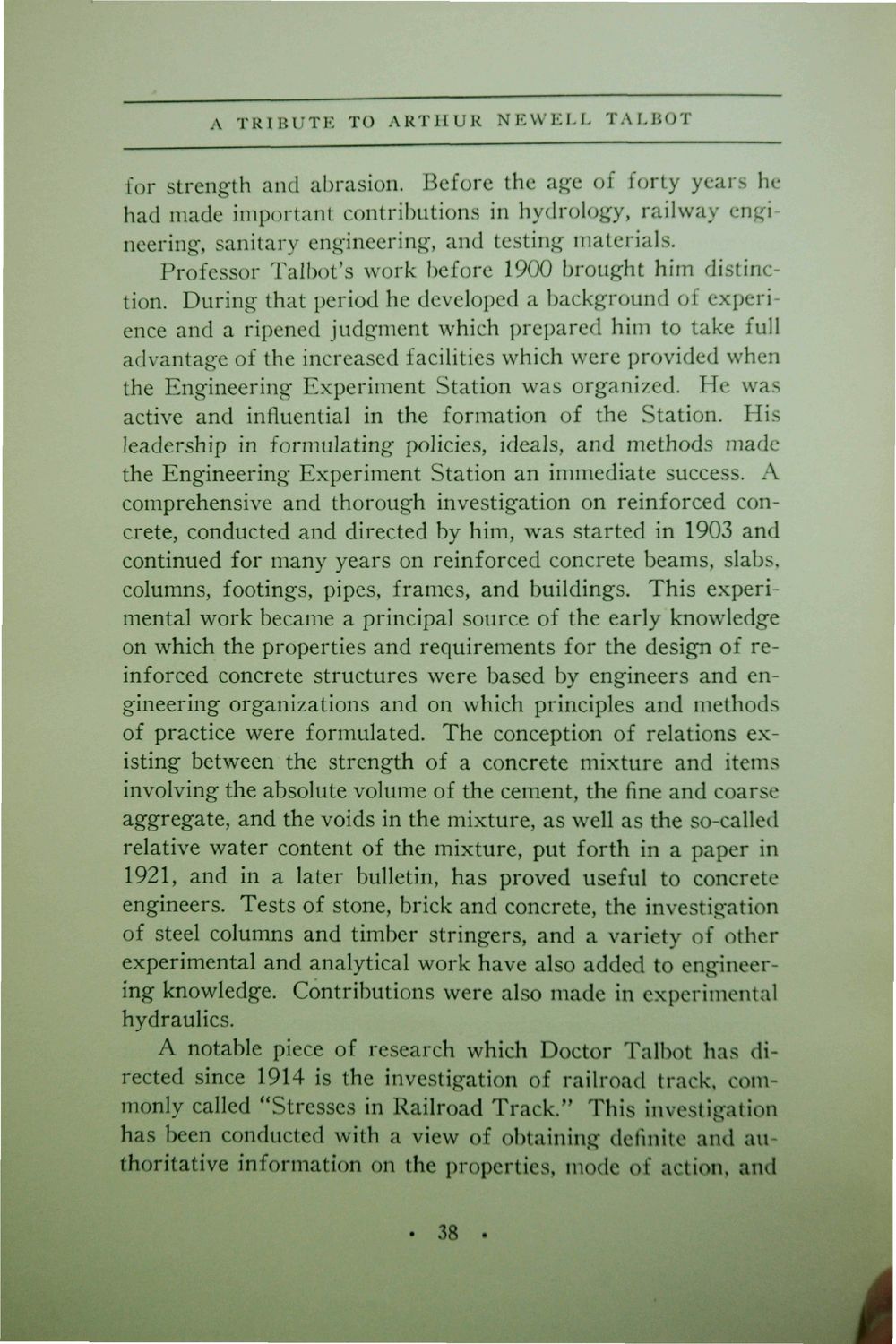| |
| |
Caption: Dedication - Talbot Lab
This is a reduced-resolution page image for fast online browsing.

EXTRACTED TEXT FROM PAGE:
A TRIBUTE TO ARTHUR NEWELL TALBOT for strength and abrasion. Before the age of forty years he had made important contributions in hydrology, railway engineering, sanitary engineering, and testing materials. Professor Talbot's work before 1900 brought him distinction. During that period he developed a background of experience and a ripened judgment which prepared him to take full advantage of the increased facilities which were provided when the Engineering Experiment Station was organized. He was active and influential in the formation of the Station. His leadership in formulating policies, ideals, and methods made the Engineering Experiment Station an immediate success. A comprehensive and thorough investigation on reinforced concrete, conducted and directed by him, was started in 1903 and continued for many years on reinforced concrete beams, slabs, columns, footings, pipes, frames, and buildings. This experimental work became a principal source of the early knowledge on which the properties and requirements for the design of reinforced concrete structures were based by engineers and engineering organizations and on which principles and methods of practice were formulated. The conception of relations existing between the strength of a concrete mixture and items involving the absolute volume of the cement, the fine and coarse aggregate, and the voids in the mixture, as well as the so-called relative water content of the mixture, put forth in a paper in 1921, and in a later bulletin, has proved useful to concrete engineers. Tests of stone, brick and concrete, the investigation of steel columns and timber stringers, and a variety of other experimental and analytical work have also added to engineering knowledge. Contributions were also made in experimental hydraulics. A notable piece of research which Doctor Talbot has directed since 1914 is the investigation of railroad track, commonly called "Stresses in Railroad Track/' This investigation has been conducted with a view of obtaining definite and authoritative information on the properties, mode of action, and . 38 •
| |